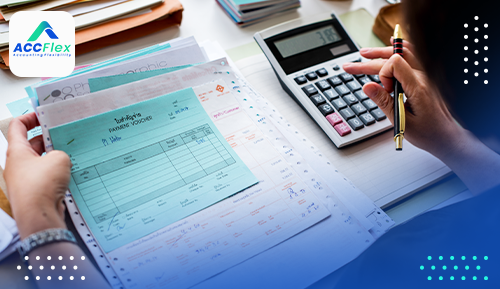Administrative expenses that incurred by the company to perform a set of administrative functions; examples of which are functions of the finance department, legal department, human resource department, and security guard, i.e. it does not include the line items of expenses of production or selling and distribution
Administrative expenses are varied and some expenses are in all companies such as salaries expenses, administrative building rent, insurance, sundry expenses, administrative building utility expenses, postage, telegraph, telephone expenses related to the department, and most general and administrative expenses line items are fixed in the short term because they are period costs and also a general company policy in expenses, this makes it easy to estimate those line items accurately
Administrative budget line items are prepared based on data from the previous periods and analyzing them and know the ratios and trends of ups and downs during periods, and administrative budgets differ from one company to another depending on their size, their policy, and the authority or power given to managers in payment approval
And there are finance expenses such as interest on loans, which is difficult to be estimated accurately due to the difference in the amount of the loans for each fiscal period and also the different interest rates, but they are estimated in light of the size of previous loans and projected loan in the budget period and also the interest rates forecast during the budget period
And administrative expenses must be monitored well over the periods, analyzed for fixed costs and variable costs because they affect the final results of the company's activity and the general and administrative expense budget is prepared at the level of each expense and also is divided over periods, whether monthly or quarterly and this budget must it is prepared accurately because it is linked to the cash budget (cash payments budget) and also to the budgeted income statement.
Selling and Distribution Cost Budget& Marketing Budget
Selling and distribution cost budget aims to determine the selling and distribution expenses predicted to be spent by the company to achieve the target sales volume during each budget period and selling expenses are related to the functions performed by the company’s exhibitions and sales outlets, and to prepare the sales budget properly, the selling and distribution expenses are divided into two groups
The first is variable selling and distribution expenses, and the second is fixed selling and distribution expenses
First, variable selling expenses
Selling expenses are those that do fluctuate with changes in sales volume and thus the sales volume is the drive and the main cause of selling and distribution expenses, and variable selling and distribution expenses is the cost of transporting products and goods to customers or to export ports abroad as well as the sales commission, which is a key figure in variable selling expenses.
Second, fixed selling expenses
Fixed selling expenses are those that do not fluctuate with changes in sales volume, i.e. it remains fixed, such as rent of exhibitions and sales and distribution staff salaries and any expenses related to exhibitions and sales outlets, there are some mixed expenses (semi-variable expenses), such as advertising costs
The objective of selling expenses budget
1- Examining the ways that help the company to achieve its objectives regarding selling and marketing the planned quantities of goods.
2- Measuring the aspects of sales and distribution activities.
3- Achieving effective control over the selling and distribution expenses, and this is by preparing periodic and effective reports on performance and costs, analyzing the differences between actual costs and budgeted costs, and taking the necessary measures.
4- Determining the ratio of selling and distribution expenses to the gross sales for short periods and specific sales territories.
5- Comparing the distribution cost with each of the marketing regions and sales branches, and find out the impact on the cost, determining the distribution cost ratio for one unit of goods and products during successive periods, identifying the trend of these ratios and examining the reasons that lead to changing them so that they can be reduced to a minimum.
6- Providing the finance department with the cash requirements for selling expenses and the time required for payments.
The selling expenses budget is prepared at the level of each expense for each period, whether monthly or quarterly, and the fixed and variable selling expenses are separated because the variable selling expenses are related to sales, the selling expenses budget is prepared at the level of sales territories by increasing costs control.
Research & Development (R&D) Budget
Given the importance of research and development costs, there are some companies, especially pharmaceutical companies, that have their budget, and this is especially in light of the highly competitive changing environment, which drives companies to bring about changes in the products form, as well as their production methods and the quality of these products and promotional methods, the research and development costs, differ according to the activity and the beneficiary department of the development costs, research and development costs may be related to
- Production, production centers, and production methods
- Marketing, marketing centers, and product promotional methods
- Administrative centers, and upgrading financial systems under information technology (IT).
The primary objective of the research and development budget is
- Increasing the company's sales volume and introducing new products.
- Cost reduction and improving existing products.
- The comparison between development researches is based on a choice between the return on investment and the financing capacity of the company.
Cost of Goods Sold (COGS) Budget
It is very important to calculate the cost of goods sold, whether it is an estimated cost of goods sold, when preparing the cost of goods sold budget, or whether when calculating the cost of goods sold that are listed on the income statement (profit and loss statement (P&L)) to show the company’s profit or loss
Whether the company is commercial or manufacturing, you need to know the accounting journal entries and accounting treatment for cost of goods sold
In general, any sales transaction must be followed by cost accounting journal entry
And the journal entry is
|
Account |
Note |
Debit |
Credit |
|
Cost of goods sold expense |
XXX |
||
|
Inventory |
For commercial companies |
XXX |
|
|
Finished Goods Inventory |
For manufacturing companies |
XXX |
As for the cost of goods sold, its cost is calculated by any of the methods of inventory pricing, whether First-In, First-Out (FIFO) or the weighted average method
The cost of goods sold budget includes all the cost of goods sold during the coming period and includes the production costs during the period, which is the (raw material, supplies, spare parts and, picking and packing) opening inventory, purchases of (raw material, supplies, spare parts, and picking and packing) are added to it, and industrial specifications are added to this and this figure is given (Used in production during the period) and work-in-process opening inventory is added to it, and work-in-process ending inventory is deducted and finished goods opening inventory is added to it and finished goods ending inventory is deducted and the final figure is given to the cost of goods sold, whether it is an estimated cost of goods sold when preparing the budget or actual cost of goods sold when preparing the income statement
The preparation of the cost of goods sold (COGS) budget is linked to all budgets starting from the purchases budget during the period
Which determines the amount of purchases during the period and is also linked to the inventory budget, whether the ending finished goods inventory budget or the direct material budget in terms of estimating the quantity and value of production in the beginning and closing of each period and also linked to the manufacturing overhead budget
The cost of goods sold statement can be illustrated as follows
Raw material, supplies, and spare parts opening inventory
(+) Purchases of raw material, supplies, spare parts, and packing
(-) Raw materials, supplies, spare parts, and packing closing inventory
(=) Direct Material used in Production
(+) Manufacturing overhead
(+) Work-in-Process (WIP) Opening Inventory
(-) Work-in-Process (WIP) Ending Inventory
(=) Cost of goods manufactured
(+) Finished goods opening inventory
(-) Finished goods ending inventory
(=) Cost of goods sold
Budgeted Income Statement
The budgeted income statement is a summary of all operating budgets and its purpose is to determine the net income expected to be achieved by the company during the period in which the budget is prepared and it starts with the sales figure in the sales budget and deducts from it the amount of cost of goods sold from the previous budget to give the gross profit and selling and administrative expenses and finance expenses are deducted are in the selling, administrative and financial budget and some provisions are deducted and some budgeted revenues added during the period and to give the operating income of the company then the income tax expense is deducted to give the net income.










